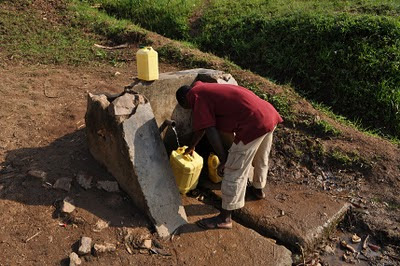 |
| Plasmodium falciparum up close. |
 |
| A map of Africa showing where malaria is prevalent. The red indicates high likelihood of malaria parasites. |
 |
| The mosquito net hanging above my bed during the day. One of the methods of vector control. |
Malaria is a disease that killed 650,000 people in the world in 2010. It’s estimated that 560,000 of those deaths occurred in sub-Sahara Africa (including Rwanda). While not as prevalent as AIDS (2 million deaths per year worldwide) or tuberculosis (1.8 million deaths per year worldwide), it is a very serious issue in sub-Sahara Africa.
The actual malarial disease is a parasite that infects and reproduces in red blood cells. There are five types of malarial parasites, but the medical community is general only concerned with one of the parasites, named plasmodium falciparum. This parasite is associated with comas, renal failure, enlarged livers, and death. While the other four parasites can cause medical complications, they rarely will induce life-threatening illness.
Malaria is transmitted by a female mosquito sucking parasitic blood from an infected person and transferring it to a new host. The mosquito is not the disease, but the vector that transmits the disease. Therefore, when combating malaria we try to do “vector control,” which is limiting a mosquito’s access to humans. Vector control is done by mosquito nets, bug repellant, removing standing water near homes and businesses, and wearing white clothing.
There is no vaccine for malaria, but there are three very common prophylaxes used when living (or visiting) a malaria prevalent country:
Mefloquine – A drug taken once per week, this drug is cheap and highly effective against malaria. The downsides can be mood swings, vivid and wild dreams, and is not recommended with people with psychiatric problems or heart issues.
Doxycycline – A drug taken daily, “doxy” is cheap. However, the drug must be taken at the same time daily and not before lying down due to possible heartburn-like symptoms and users must avoid prolonged sun exposure.
Malarone – The Cadillac of malaria drugs, malarone can also be used to treat infected people. This drug has basically no side effects (except possible canker sores, but these are rare). The downside: malarone must be taken daily and costs $5 per pill.






























